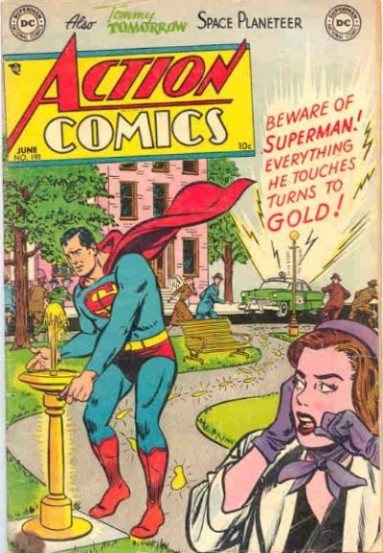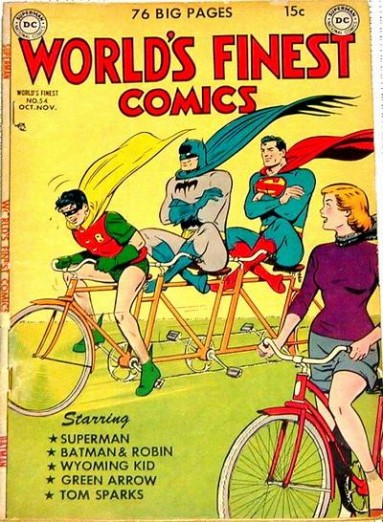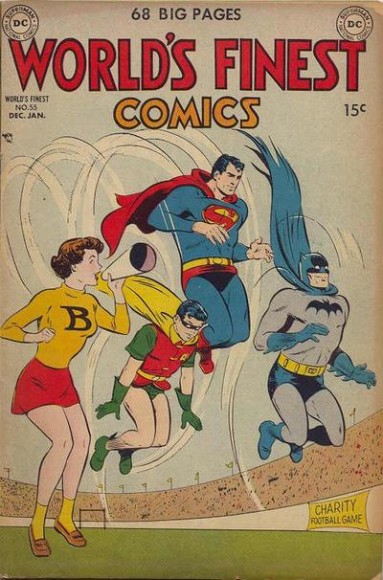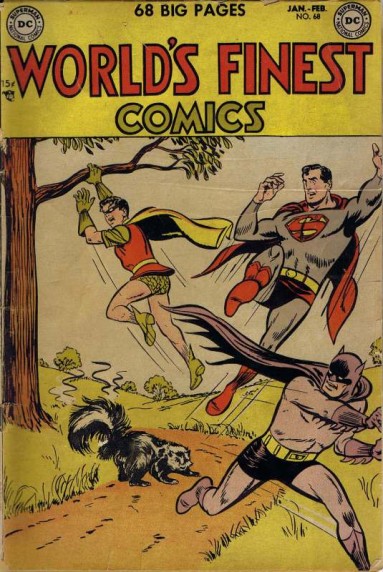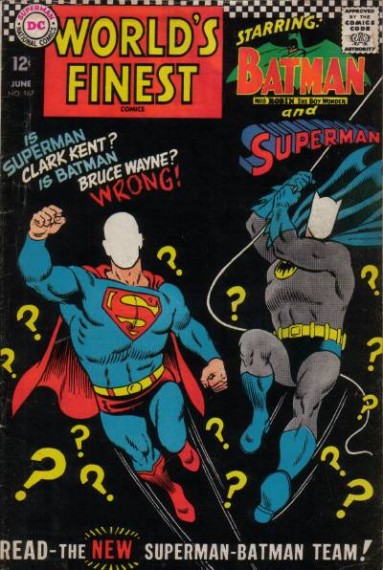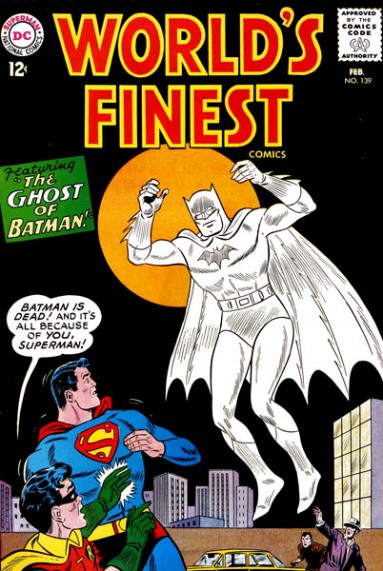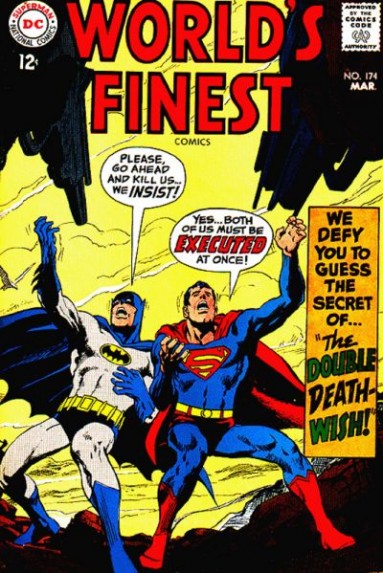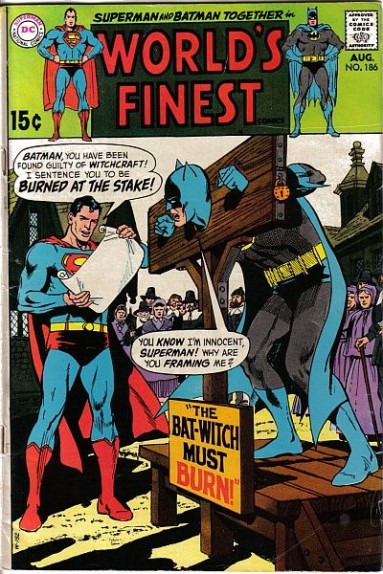I. Let me clarify one thing from the start: Christopher Nolan’s Batman: The Dark Knight Rises really is a piece of anti-Occupy propaganda. Nolan, the director, claims the script was written before the movement even started, and that the famous scenes of the occupation of New York (“Gotham”) were really inspired by Dickens’ account of the French Revolution.
This is probably true, but it’s disingenuous. Everyone knows Hollywood scripts are continually being rewritten while movies are in production, and that when it comes to messaging, even details like where a scene is shot (“I know, let’s have the cops face off with Bane’s followers right in front of the New York Stock Exchange!”) or a minor change of wording (“let’s change ‘take control of’ to ‘occupy’”) can make all the difference. Then there’s the fact that the villains actually do attack the Stock Exchange. Still, it’s precisely this ambition, the filmmaker's willingness to take on the great issues of the day, that ruins the movie.
It’s sad, because both Batman Begins and The Dark Knight had moments of genuine eloquence. In the first films of the trilogy, Nolan has some interesting things to say about human psychology, and, particularly, about the relationship between creativity and violence. The Dark Knight Rises is more ambitious. It dares to speak on a scale and grandeur appropriate to the times. And in doing so, it stuttered into incoherence.
II. Dark Knight Rises offers an opportunity to ask some potentially enlightening questions about contemporary culture. What are superhero movies really all about? What could explain the sudden explosion of such movies—one so dramatic that it sometimes seems that comic book-based movies are replacing sci-fi as the main form of Hollywood special effects blockbuster, almost as rapidly as the cop movie replaced the Western as the dominant action genre in the ‘70s?
Why, in the process, have familiar superheroes suddenly been given complex interiority: family backgrounds, ambivalence, moral crises and self-doubt? And why does the very fact of their receiving a soul seem to force them to also choose some kind of explicit political orientation? One could argue that this happened first not with a comic-book character, but with James Bond. Casino Royale gave Bond psychological depth for the first time. By the very next movie he was saving indigenous communities in Bolivia from evil transnational water privatizers. Spiderman, too, broke left in his latest cinematic incarnation, just as Batman broke right.
In a way, this makes sense. Superheroes are a product of their historical origins. Superman is a Depression-era displaced Iowa farm boy; Peter Parker, a product of the ‘60s, is a smartass working-class kid from Queens; Batman, the billionaire playboy, is a scion of the military-industrial complex that was created, just as he was, at the beginning of World War II. But again, in the latest movie, the subtext became surprisingly explicit (“You’re not a vigilante,” says the police commander, “you’re an anarchist!”): particularly in the climax, where Spiderman, wounded by a police bullet, is rescued by an outbreak of working class solidarity as dozens of crane operators across defy city orders and mobilize to help him. Nolan’s movie is the most ambitious, but it also falls the most obviously flat. Is this because the superhero genre does not lend itself to a right-wing message?
III. Let’s start at the beginning, by looking specifically at the comic book stories where the TV shows, cartoon series and blockbuster movies ultimately came from. Comic-book superheroes were originally a mid-century phenomenon, and like all mid-century pop culture phenomena, they are essentially Freudian.
Umberto Eco once remarked that comic book stories already operate a little bit like dreams: the same plot is repeated, obsessive-compulsively, over and over; nothing changes; and even as the backdrop for the stories shifts from Great Depression to World War to post-war prosperity, the heroes, whether they are Superman, Wonder Woman, the Green Hornet, or the Mighty Thor, seem to exist in an eternal present, never aging, always the same.
The plot is almost always some approximation of the following: a bad guy, maybe a crime boss, more often a powerful supervillain, embarks on a project of world conquest, destruction, theft, extortion, or revenge. The hero is alerted to the danger and figures out what’s happening. After trials and dilemmas, at the last possible minute the hero foils the villain’s plans. The world is returned to normal until the next episode when exactly the same thing happens once again.
It doesn’t take a genius to figure out what’s going on here. These “heroes” are purely reactionary, in the literal sense. They have no projects of their own, at least not in their role as heroes: as Clark Kent, Superman may be constantly trying, and failing, to get into Lois Lane’s pants, but as Superman, he is purely reactive. In fact, superheroes seem almost utterly lacking in imagination: like Bruce Wayne, who with all the money in the world can’t seem to think of anything to do with it other than to indulge in the occasional act of charity; it never seems to occur to Superman that he could easily carve free magic cities out of mountains.
Almost never do superheroes make, create, or build anything. The villains, in contrast, are endlessly creative. They are full of plans and projects and ideas. Clearly, we are supposed to first, without consciously realizing it, identify with the villains. After all, they’re having all the fun. Then of course we feel guilty for it, re-identify with the hero, and have even more fun watching the superego clubbing the errant Id back into submission.
Politically speaking, superhero comic books can seem pretty innocuous. If all a comic is trying to do is to tell a bunch of adolescent boys that everyone has a certain desire for chaos and mayhem, but that ultimately such desires need to be controlled, the implications would not seem especially dire, especially because the message still does carry a healthy dose of ambivalence. After all, the heroes of even the most right-leaning action movies seem to spend much of their time smashing up suburban shopping malls, something many of us would like to do at some point in our lives. In the case of most comic book superheroes, however, the mayhem has extremely conservative political implications. To understand why requires a brief digression on the question of constituent power.
IV. Costumed superheroes ultimately battle criminals in the name of the law—even if they themselves often operate outside a strictly legal framework. But in the modern state, the very status of law is a problem. This is because of a basic logical paradox: no system can generate itself.
Any power capable of creating a system of law cannot itself be bound by them. So law has to come from somewhere else. In the Middle Ages, the solution was simple: the legal order was created, either directly or indirectly, by God. God, as the Old Testament makes abundantly clear, is not bound by laws or even any recognizable system of morality, which only stands to reason: if you created morality, you can’t, by definition, be bound by it. The English, American, and French revolutions changed all that when they created the notion of popular sovereignty—declaring that the power once held by kings is now held by an entity called “the people.”
“The people,” however, are bound by the laws. So in what sense can they have created them? They created the laws through those revolutions themselves, but, of course, revolutions are acts of law-breaking. It is completely illegal to rise up in arms, overthrow a government, and create a new political order. Cromwell, Jefferson, and Danton were surely guilty of treason according to the laws under which they grew up, as surely as they would have been had they tried to do the same thing again twenty years later.
So, laws emerge from illegal activity. This creates a fundamental incoherence in the very idea of modern government, which assumes that the state has a monopoly of the legitimate use of violence (only the police, or prison guards, have the legal right to beat you up). It’s okay for police to use violence because they are enforcing the law; the law is legitimate because it’s rooted in the constitution; the constitution is legitimate because it comes from the people; the people created the constitution by acts of illegal violence. The obvious question, then, is: how does one tell the difference between “the people” and a mere rampaging mob?
There is no obvious answer.
The response, by mainstream, respectable opinion, is to try to push the problem as far away as possible. The usual line is: the age of revolutions is over, except perhaps in benighted spots like Gabon or Syria, and we can now change the constitution, or legal standards, by legal means. This of course means that the basic structures will never change. We can witness the results in the US, which continues to maintain an architecture of state, with its electoral college and two party-system, that—while quite progressive in 1789—now makes us appear, in the eyes rest of the world, the political equivalent of the Amish, still driving around with horses and buggies. It also means we base the legitimacy of the whole system on the consent of the people despite the fact that the only people who were ever really consulted on the matter lived over 200 years ago. In America, at least, “the people” are all long since dead.
We’ve gone, then, from a situation where the power to create a legal order derives from God, to one where it derives from armed revolution, to one where it is rooted in sheer tradition—“these are the customs of our ancestors, who are we to doubt their wisdom?” Of course, a not insignificant number of American politicians make clear they’d really like to give it back to God again. For the radical Left and the authoritarian Right the problem of constituent power is very much alive, but each takes diametrically opposite approaches to the fundamental question of violence.
The Left, chastened by the disasters of the 20th century, has largely moved away from its older celebration of revolutionary violence, preferring non-violent forms of resistance. Those who act in the name of something higher than the law can do so precisely because they don’t act like a rampaging mob.
For the Right, on the other hand—and this has been true since the rise of fascism in the ‘20s—the very idea that there is something special about revolutionary violence, anything that makes it different from mere criminal violence, is so much self-righteous twaddle. Violence is violence. But that doesn’t mean a rampaging mob can’t be “the people,” because violence is the real source of law and political order anyway. Any successful deployment of violence is, in its own way, a form of constituent power.
This is why, as Walter Benjamin noted, we cannot help but admire the “great criminal”: because, as so many movie posters put it, “he makes his own law.” After all, any criminal organization does, inevitably, begin developing its own—often quite elaborate—set of internal laws. They have to, as a way of controlling what would otherwise be completely random violence. From the right-wing perspective, that’s all that law ever is. It is a means of controlling the very violence that brings it into being, and through which it is ultimately enforced.
This makes it easier to understand the often surprising affinity between criminals, criminal gangs, right-wing political movements, and the armed representative state. Ultimately, they speak the same language. They create their own rules on the basis of force. As a result, they typically share the same broad political sensibilities. Mussolini might have wiped out the mafia, but Italian Mafiosi still idolize Mussolini. In Athens, nowadays, there’s active collaboration between the crime bosses in poor immigrant neighborhoods, fascist gangs, and the police. In fact, in this case it was clearly a political strategy: faced with the prospect of popular uprisings against a right-wing government, the police first withdrew protection from neighborhoods near the immigrant gangs, then started giving tacit support to the fascists. For the far-right, then, it is in that space where different violent forces operating outside of the legal order interact that new forms of power, and hence of order, can emerge.
V. What does all this have to do with costumed superheroes? Well, everything. Because this is exactly the space that superheroes, and super-villains, also inhabit. An inherently fascist space, inhabited only by gangsters, would-be dictators, police, and thugs, with endlessly blurring lines between them.
Sometimes the cops are legalistic, sometimes they’re corrupt. Sometimes the police themselves slip into vigilantism. Sometimes they pursue the superhero, sometimes they look the other way, sometimes they help. Villains and heroes occasionally team up. The lines of force are always shifting. If anything new were to emerge, it could only be through such shifting forces. There’s nothing else, since, in the DC and Marvel universes, neither God nor The People really exist.
Insofar as there is a potential for constituent power then, it can only come from purveyors of violence. The supervillains and evil masterminds, when they are not merely indulging in random acts of terror, are always scheming of imposing a New World Order of some kind or another. Surely, if Red Skull, Kang the Conqueror, or Doctor Doom ever did succeed in taking over the planet, there would be lots of new laws created very quickly, although their creator would doubtless not himself feel bound by them. Superheroes resist this logic. They do not wish to conquer the world—if only because they are not monomaniacal or insane. As a result, they remain parasitical off the villains in the same way that police remain parasitical off criminals: without them, they’d have no reason to exist. They remain defenders of a legal and political system which itself seems to have come out of nowhere, and which, however faulty or degraded, must be defended, because the only alternative is so much worse.
They aren’t fascists. They are just ordinary, decent, super-powerful people who inhabit a world in which fascism is the only political possibility.
VI. Why, might we ask, would a form of entertainment premised on such a peculiar notion of politics emerge in early to mid-20th century America, at just around the time that actual fascism was on the rise in Europe? Was it some kind of fantasy American equivalent? Not exactly. It’s more that both fascism and superheroes were products of similar historical predicament: What is the foundation of social order when one has exorcised the very idea of revolution? And above all, what happens to the political imagination?
One might begin here by considering that the core audience for superhero comics is adolescent or pre-adolescent white boys. That is: boys who are at a point in their lives where they are likely to be both maximally imaginative and at least a little bit rebellious, but who are being groomed to eventually take on positions of authority and power in the world, to be fathers, sheriffs, small business owners, middle management. What do they learn from these endless repeated dramas? Well, first off, that imagination and rebellion lead to violence. Second, that, like imagination and rebellion, violence is a lot of fun; thirdly, that violence must ultimately be directed back against any overflow imagination and rebellion lest everything go askew. These things must be contained! This is why, insofar as superheroes are allowed to be imaginative in any way, their imagination can only be extended to the design of their clothes, their cars, maybe their homes, their various accessories.
It’s in this sense that the logic of the superhero plot is profoundly, deeply conservative. Ultimately, the division between Left- and Right-wing sensibilities turns on one’s attitude towards the imagination. For the Left, imagination, creativity, by extension production, the power to bring new things and new social arrangements into being, is always to be celebrated. It is the source of all real value in the world. For the Right, it is dangerous, and ultimately evil. The urge to create is also a destructive urge. This kind of sensibility was rife in the popular Freudianism of the day: the Id was the motor of the psyche, but also amoral; if really unleashed, it would lead to an orgy of destruction. This is also what separates conservatives from fascists. Both agree that the imagination unleashed can only lead to violence and destruction. Conservatives wish to defend us against that possibility. Fascists wish to unleash it anyway. They aspire to be, as Hitler imagined himself, great artists painting with the minds, blood, and sinews of humanity.
This means that it’s not just the mayhem that becomes the reader’s guilty pleasure, but the very fact of having a fantasy life at all. And while it might seem odd to think any artistic genre is ultimately a warning about the dangers of the human imagination, it would certain explain why, in the staid ‘40s and ‘50s, everyone did seem to feel there was something vaguely naughty about reading them. It also explains how in the ‘60s it could all suddenly seem so harmless, allowing the advent of silly, campy TV superheroes like the Adam West Batman series, or Saturday morning Spiderman cartoons.
If the message was that rebellious imagination was okay as long as it was kept out of politics, and simply confined to consumer choices (clothes, cars, and accessories), this had become a message that even executive producers could easily get behind.
VII. If the classic comic book is ostensibly political (about madmen trying to take over the world), really psychological and personal (about overcoming the dangers of rebellious adolescence), but ultimately political after all, then the new superhero movies are precisely the reverse. They are ostensibly psychological and personal, really political, but ultimately psychological and personal.
The humanization of superheroes didn’t start in the movies. It actually began in the ‘80s and ‘90s, within the comic book genre itself, with Frank Miller’s Dark Knight Returns and Alan Moore’s Watchmen—what might be called superhero noire. At that time, superhero movies were still working through the legacy of the ‘60s camp tradition. One might say the new spirit reached its cinematic peak in Batman Begins, the first of the Nolan trilogy. In that movie, Nolan essentially asks, “what if someone like Batman actually did exist, in the real world? What would it actually take to make someone want to dress up as a bat and attack criminals?”
Unsurprisingly, psychedelic drugs play an important role. So do severe mental health issues, and a history of association with bizarre religious cults. It is curious that commentators on the movie never seem to pick up on the fact that Bruce Wayne, in the Nolan films, is borderline psychotic.
As himself he is almost completely dysfunctional, incapable of forming friendships or romantic attachments, uninterested in work unless it somehow reinforces his morbid obsessions. The hero was so obviously crazy, and the movie so obviously about his battle with his own craziness, that it’s not a problem that the villains are just a series of ego-appendages, especially in the first film of the trilogy: Ra’s al Ghul (the bad father), the Crime boss (the successful businessman), the Scarecrow (who drives the businessman insane.) There’s nothing particularly appealing about any of them, but that doesn’t matter: they’re all just shards and tessera of the hero’s shattered mind. As a result, there’s obviously a political message. Or so it seems. When you create a movie out of characters so encrusted with myth and canon history, no director is entirely in control of his material.
In the movie, Ra’s al Ghul first initiates Batman into the League of Shadows in a monastery in Bhutan, and only then reveals his plan to destroy Gotham to rid the world of its corruption. In the original comics, we learn that Ra’s al-Ghul—a character introduced, tellingly, in 1971—is in fact a Zerzanesque Primitivist and eco-terrorist, determined to restore the balance of nature by reducing the earth’s human population by roughly 99 percent. None of the villains in any of the three movies want to rule the world. They don’t wish to have power over others, or to create new rules of any sort. Even their henchmen are temporary expedients—they always ultimately plan to kill them.
Nolan’s villains, in short, are always anarchists, but they’re always very peculiar anarchists, of a sort that seem to exist only in the filmmaker’s imagination. They are anarchists who believe that human nature is fundamentally evil and corrupt. The Joker, the real hero of the second movie, makes all of this explicit: he is the Id become philosopher.
The Joker is nameless, has no origin other than whatever he whimsically invents on any particular occasion, and it’s not even clear what his powers are. Yet he is, inexorably, powerful. The Joker is a pure force of self-creation, a poem written by himself. His only purpose in life appears to be an obsessive need to prove to others first, that everything is and can only be poetry—and second, that poetry is evil.
VIII. So here we are back to the central theme of the early superhero universes: a prolonged reflection on the dangers of the human imagination, how the reader’s own desire to immerse oneself in a world driven by artistic imperatives is living proof of why that the imagination must always be carefully contained.
The result is a thrilling movie, with a villain both likeable—he’s just so obviously having fun with it—and genuinely frightening. Batman Begins was merely full of people talking about fear. The Dark Knight actually produced some. But even that movie begins to fall flat the moment it touches on popular politics. The end, when Bruce and Commissioner Gordon settle on the plan to scapegoat Batman and create a false myth around the martyrdom of Harvey Dent, is nothing short of a confession that politics is identical to the art of fiction. The Joker was right: redemption lies only in the fact that the violence, the deception, can be turned back upon itself. Nolan would have done well to leave it at that.
The problem is that this vision of politics simply isn’t true. Politics is not just the art of manipulating images, backed up by violence. It’s not just a duel between impresarios before an audience that will believe most anything if presented artfully enough. No doubt it must seem that way to extraordinarily wealthy Hollywood film directors, but between the shooting of the first and second movies, history intervened quite decisively to point that out just how wrong this vision is.
The economy collapsed. Not because of the manipulations of some secret society of warrior monks, but because of a bunch of financial managers who, living in Nolan’s bubble world and sharing his assumptions about the endlessness of popular manipulability, turned out to be wrong. There was a mass popular response. It did not take the form of a frenetic search for messianic saviors, mixed with outbreaks of nihilist violence: increasingly, it took the form of a series of real popular movements, even revolutionary movements, toppling regimes in the Middle East and occupying squares everywhere from Cleveland to Karachi, trying to create new forms of democracy.
Constituent power had reappeared, and in an imaginative, radical, and remarkably non-violent form. This is precisely the kind of situation a superhero universe cannot address. In Nolan’s world, something like Occupy could only have been the product of some tiny group of ingenious manipulators who really are pursuing some secret agenda.
The Batman series really should have left such topics alone, but apparently Nolan couldn’t help himself. The result is almost completely incoherent. The plot is convoluted and barely worth recounting. A rival businessman hires Catwoman to steal his Bruce Wayne’s fingerprints so he can use them to steal all his money, but really he is being manipulated by a gasmask-wearing supervillain mercenary named Bane. Bane is stronger than Batman, but he’s pining with unrequited love for Ra’s al-Ghul’s daughter Talia, crippled by mistreatment in his youth in a dungeon-like prison, his face invisible behind a mask he must wear continually so as not to collapse in agonizing pain. Insofar as the audience identifies with a villain like that, it can only be out of sympathy. No one in their right mind would want to be Bane.
Presumably, though, that’s the point: a warning against the dangers of undue sympathy for the unfortunate. Because Bane is also a charismatic revolutionary, who after disposing of Batman, reveals the myth of Harvey Dent to be a lie, frees the denizen’s of Gotham’s prisons, traps almost its entire police force underground, and releases its ever-impressionable populace to and sack and burn the mansions of the 1%, dragging them before revolutionary tribunals. The Scarecrow, amusingly, reappears as Robespierre. Eventually, however, he’s intending to kill them all with a nuclear bomb converted from some kind of green energy project. The reason for this remains unclear.
Why does Bane wish to lead the people in a social revolution, if he’s just going to nuke them all in a few weeks anyway? It’s anyone’s guess. He claims that before you destroy someone, first you must give them hope. So is the message that utopian dreams can only lead to nihilistic violence? Presumably something like that, but it’s singularly unconvincing, since the plan to kill everyone came first, and the revolution was a decorative afterthought. In fact, what happens to the city can only possibly make sense as a material echo of what’s always been most important: what’s happening in Bruce Wayne’s tortured brain.
In the end, Batman and the Gotham police rise from their respective dungeons and join forces to battle the evil Occupiers outside the Stock Exchange, Batman fakes his own death disposing of the bomb, and Bruce ends up with Catwoman in Florence. A new phony martyr legend is born and the people of Gotham are pacified. In case of further trouble, we are assured there is also a potential heir to Batman, a disillusioned police officer named Robin. The movie finally ends, and everyone breathes a sigh of relief.
IX. If there’s supposed to be a take-home message from all of this, it must run something like: “Yes, the system is corrupt, but it’s all we have, and anyway, figures of authority can be trusted if they have first been chastened and endured terrible suffering.” Normal police let children die on bridges, but police who’ve been buried alive for weeks can employ violence legitimately. Charity is much better than addressing structural problems. Any attempt to address structural problems, even through non-violent civil disobedience, really is a form of violence, because that’s all it could possibly be. Imaginative politics are inherently violent, and therefore there’s nothing inappropriate if police respond by smashing protestors’ heads repeatedly against the concrete.
As a response to Occupy, this is nothing short of pathetic. When Dark Knight came out in 2008, there was much discussion over whether the whole thing was really a vast metaphor for the war on terror: how far is it okay for the good guys (America, obviously) to adapt the bad guy’s methods? The filmmakers managed to respond to these issues and still produce a good movie. This is because the War on Terror actually was a battle of secret networks and manipulative spectacles. It began with a bomb and ended with an assassination. One can almost think of it as an attempt, on both sides, to actually enact a comic book version of the universe.
Once real constituent power appeared on the scene, that universe shriveled into incoherence. Revolutions were sweeping the Middle East and the US was still spending hundreds of billions of dollars fighting a ragtag bunch of seminary students in Afghanistan. Unfortunately for Nolan, for all his manipulative powers the same thing happened to his world when even the hint of real popular power arrived in New York.

